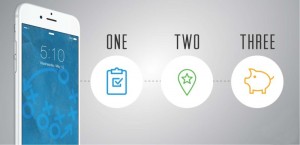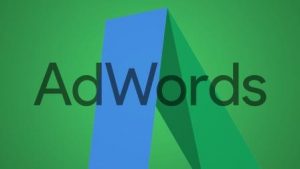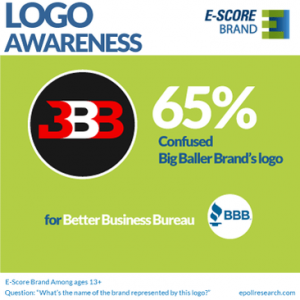Pins and posts. Fans and favorites. Handles and hashtags. The world of social media has exploded and along with it, there is a lot of lingo to add to your arsenal of digital knowledge. So reference this handy social media glossary to get up to speed, check your knowledge and impress your kids at the dinner table. #totesawesome
A | B | C | E | G | H | I | J | K | L | M | N | O | P | Q | R | S | T | U | V | W | X | 0-9
App: An application that performs a specific function on your mobile device, allowing users to easily access social media platforms and more on smartphones and tablets.
Avatar: An image and/or user name that represents a person within social networks and forums.
Analytics/Insights: A collection of social media activity data (i.e. reach, impressions, engagement, etc.) that is used to understand and improve performance.
Blog: Is used as a noun or a verb, a blog is a frequently updated website or page to which an individual or organization posts opinions, articles and more, Tto blog refers to the act of producing new material for a blog.
Board: A Pinterest grouping feature that allows users to organize pinned content by theme.
Campaign: The planning, implementing, and measuring of marketing techniques used on social networks to achieve a defined goal.
Check In: A feature on some social networks that allows a person to share his or her current location to the social community.
Circles: A Google+ feature that allows users to cluster followers into specific groups for more targeted messaging.
Comment: A public response or reaction to a blog post, status update or any other piece of content on social media.
Connection: A person that is part of a LinkedIn user’s professional network. Connections on LinkedIn are comparable to Facebook friends..
Content: Valuable, shareable online material including text, photos, videos, audio, etc.
Content Management System (CMS): A platform designed to enable non-technical users to manage website or blog content without having programming knowledge.
Cover Photo: The 851×315 pixel image found at the top of a Facebook page or profile. Cover photos for businesses are used for branding, campaign messaging and more.
Dashboard: An administrative interface that allows users to monitor and measure social network activity and performance.
Direct Message: A private message on Twitter or Instagram between two users. Often abbreviated as “DM”.
Embed: The act of adding code from one website or blog to another so that social media content, such as a YouTube video, can be displayed while it’s being hosted on another platform.
Engagement: The amount of activity social media content receives including ”Likes”, retweets, shares and comments.
Event: A Facebook feature that allows users to invite others to upcoming occasions, or share important life milestones with friends.
Facebook: The largest social network in the world, with over 936 million daily active users on average.
Facebook Advertising: A form of paid amplification on Facebook to help users expand post reach and engagement with an intended audience. Facebook advertising allows for audience targeting by geography, interest and other granular details.
Fan: A Facebook user that follows or “Likes” a business or brand page.
Favorite: An action that represents a Twitter user’s approval and favorability of a tweet or piece of content on Twitter.
Filter: An Instagram tool which allows a user to adjust the tone and look of a photo.
Follower: A Twitter user who has subscribed to another user’s tweets. Similar to “Like” on Facebook.
Forum: An online discussion site.
Foursquare: A social network that allows friends to check in to a physical location on their mobile device, share locations, and connect with others in the same place.
Friend: A mutually agreed upon connection between two Facebook users.
Feed: A stream of the latest social media and other content from select channels on a website or blog, powered by an aggregator.
Geotagging/Geolocation: The process of adding the exact geographic location of a user in social media updates including photos, videos, etc. This can be disabled by a user’s device privacy settings.
Google+: Google’s social network that promotes branding, social reviews and search visibility. Businesses can share photos, contact information and more which will appear in Google’s local search engine results.
Group: An exclusive social space that allows select individuals to share updates, photos and more with each other.
Handle: The user name that a Twitter user chooses to represent themselves. To communicate with or tweet someone, the update must include the @ symbol followed by the user’s handle.
Hangout: A Google+ feature that allows a select group of users to have conversations and share content with each other.
Hashtag: A searchable, interactive feature that allows users to relate a status update or photo upload to a broader topic, using the “#” symbol followed by a keyword.
HootSuite: Social media management tool that helps brands streamline and schedule content across major social networks.
Inbound Marketing: A permission-based marketing strategy focused on the process of attracting a target audience, converting and closing leads, and delighting customers. Social media is a common inbound marketing channel.
Instagram: A photo sharing application and social media network that allows users to take photos, apply filters, and share the photos instantly on Instagram and other social networks like Facebook and Twitter.
Like: An action on Facebook and some other social networks that allows users to show approval of a status update or other content.
Link Building: Generating links to your site or blog from social media platforms and other websites – and vice versa – with the hopes of improving search engine ranking.
LinkedIn: A business-oriented social media channel mainly used for professional networking. Users are able to post job experience and skills, make personal and professional connections, search for careers and more.
LinkedIn Ads: A self-service advertising solution on LinkedIn that allows users to create and place ads within LinkedIn.com
List: A select group of Twitter users organized by theme or interest. Users can develop original lists to follow, or subscribe to lists established by others.
Mention: The act of referencing a user in a social media post, notifying the mentioned person or business of your update.
Message: A private communication between two or more users on Facebook.
Myspace: An online social network that primarily caters to artists and bands. The platform provides extensive profile customization capabilities.
Network: A user’s social media connections, which includes those that are connected to your friends and followers.
News Feed: A complete, chronological feed of status updates from friends and fanned pages on the homepage of Facebook or another social network. A news feed also includes sponsored content.
Notification: A notice informing users of pertinent social media activity.
Open Graph: Functionality that supports the integration between Facebook and other websites by allowing post elements to become rich “graph” objects. Site owners can integrate open graph tags in images, titles and descriptions and more to better assure content is rendered properly when shared.
Page: A Facebook profile for a business, brand or product. Facebook users can “Like” these pages to receive status updates, but cannot become “friends” as with personal profiles
Periscope: Twitter’s social media network that features live-streaming video.
Pin: A piece of content collected and shared by Pinterest users.
Pinterest: A pin board-style social network where users can share content and create theme-based collections.
Platform: A framework or content management system that runs software and presents information. For example, Facebook is a popular platform for sharing social content and WordPress is a popular platform for blogs.
Podcast: A digital audio file made available for download which you may subscribe to. A podcast is often available as a series of installments or in a series.
Profile: A social network user’s personal, customizable page used to share and store updates, photos, videos, personal information etc.
Promoted Tweets: Tweets purchased by advertisers who want to reach a wider, more targeted group of users to spark engagement.
Quora: A social media network where its users ask, answer, edit and organize questions.
Reach: The total number of people who saw a certain post due to both organic updates and paid promotion.
Repin: Sharing another Pinterest user’s pin.
Reply: Replying directly to a tweet on Twitter which only the people following you and the person you’re replaying to can view.
Retweet: Reposting another user’s tweet to share with your Twitter followers.
SEO: The process of following best practices to improve the ranking of your websites and social media content in non-paid/sponsored search results.
Share: The act of posting a status, link or image from a friend or business’ page, or directly from the internet to share with your friends or followers.
Snapchat: A mobile messaging app allowing users to send photos or 1-10 second videos to selected friends. The content then disappears from the screen unless the user takes a screenshot or becomes a Snapchat story which is posted for 24 hours.
Social Media: Media designed to let users post content and communicate with others online through highly accessible and scalable online publishing techniques.
Social Media Marketing: A form of internet marketing utilizing the unique attributes of various social networking sites to increase brand exposure, communicate with consumers, as well as establish and maintain relationships.
Social Networking: The act of participating in an online community.
Sponsored/Promoted Content: Paid advertisements targeted toward specific audiences based on demographics to increase the reach and relevancy of a particular post.
Status: Content shared by a social network user to express thoughts, show activities, disclose his or her location, tag friends and more.
Tab: Separate sections within a Facebook page that organize content by updates, personal information, friends, photos, videos, etc.
Tag: To identify or mention an individual user in a photo or status update, which subsequently generates a link to the tagged user’s profile.
Targeting: Defining the audience of a social media update based the content and context to increase relevancy.
Third-Party: Solutions outside of social media platforms, such as Woobox and OfferPop, used to develop, execute and streamline interactive campaigns and contests on social media.
Timeline: Facebook’s newest profile layout that displays a user’s collection of share content. Originally called a Facebook “wall.”
Trend: A topic or event which is currently popular and much discussed online. Trends are often signified by frequently used hashtags.
Tumblr: A microblogging platform and social networking site owned by Yahoo! Inc. that allows users to post multimedia and other content to a short-form blog.
Tweet: A Twitter status update that can be no more than 140 characters.
Twitter: A popular social network that lets members post short, timely updates.
Unfriend: To remove someone from your Facebook contact list.
Vine: A mobile app owned by Twitter that allows users to post and share short (up to 6 second) videos that play in a continuous loop.
Viral: A piece of content that is organically, rapidly and widely shared online.
YouTube: A video-sharing platform owned by Google where users can upload videos and/or watch other user’s videos.
+1: A Google+ feature in which users can show approval for people, places, things etc.. Similar to “Like” on Facebook.
(207)
Report Post





